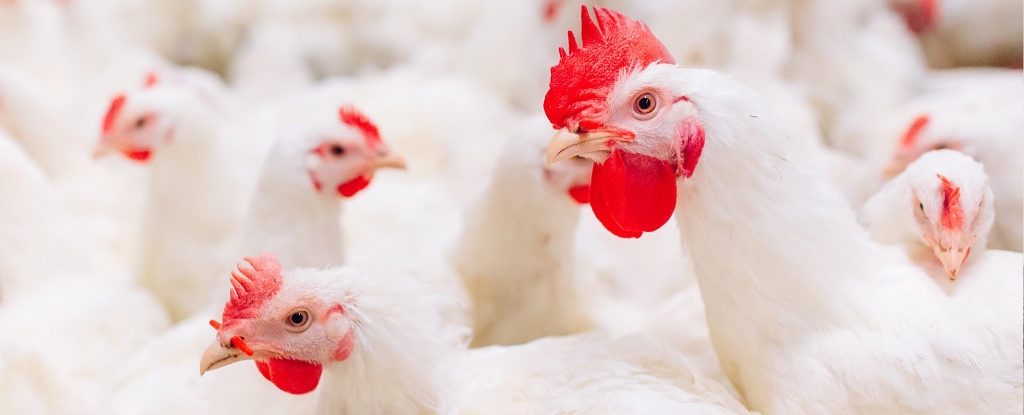Bird flu is flying wild, and it has many infectious disease experts more worried now than ever.
The H5N1 avian influenza virus has killed tens of millions of birds across the planet and more than 40,000 sea lions and seals. For animals, it’s a pandemic.
Still, the CDC says the risk to humans is low. Most people seem to have very little chance, if any, of catching H5N1 avian influenza right now.
Only three people in the US have tested positive for the virus since its surprising break into the cattle population, and they all had direct contact with infected cows.
But infectious disease experts are increasingly concerned that the H5N1 virus could make a sustained jump into humans and start spreading among us. That’s not inevitable, but several recent developments suggest it’s a growing threat.
“There’s a lot going on,” Dr. Monica Gandhi, a professor of medicine and associate chief of the Division of HIV, Infectious Diseases, and Global Medicine at the University of California, San Francisco, told Business Insider. “I’m becoming more worried.”
You shouldn’t panic, but you should probably know what’s going on. This virus is a leading candidate for the next pandemic, and four developments in the past month have experts worried.
Here’s what you need to know.
Bird flu hospitalized a child in Australia
On Friday the World Health Organization announced that a 2-year-old had become Australia’s first human case of H5N1 in March.
After returning from travel to Kolkata, India, the child’s symptoms – loss of appetite, fever, coughing, vomiting, and irritability, according to WHO – put them in the hospital for two and a half weeks, including admission to the intensive care unit.
As human cases crop up in different parts of the world, epidemiologists like Christopher Dye become more concerned.
“There’s such a vast amount of virus at the moment. And clearly it is changing, and it’s doing new and unexpected things,” Dye, a professor and senior research fellow at the University of Oxford, told BI.
He recently co-authored a paper, published in the medical journal BMJ, arguing that the risk of a major human outbreak is “large, plausible, and imminent.”
“Influenza has always been a concern for decades and decades, and this particular form of influenza for at least two decades,” Dye said. “But now, it’s risen to a level of concern, I think, which is greater than ever before.”
Mice could bring bird flu into homes
A total of 47 house mice have tested positive for H5N1 in New Mexico, the US Department of Agriculture reported on Tuesday.
“Mice are kind of everywhere,” Gandhi said. “They’re around other animals, they’re around humans a lot. And it’s a little worrisome.”
The samples were collected from the sick mice in early May. According to The Telegraph, scientists suspect that the mice, as well as some domestic cats, may have gotten the virus from drinking raw milk from infected cows. (Public health experts resoundingly advise that people should not drink unpasteurized, aka “raw,” milk.)
“This brings the virus closer to human homes,” Rick Bright, former director of the Biomedical Advanced Research and Development Authority, told The Telegraph. “This is out of control,” he added.
Every new population of animals, and every new exposure to humans, is another opportunity for the virus to mutate and adapt.![]()
One mutation suggests the virus has started adapting
When the CDC analyzed a virus sample from the second US farmworker infected, they spotted a mutation in the virus’s replication machinery – the way it gets inside its host’s cells to make copies of itself.
It’s a change “associated with viral adaptation to mammalian hosts,” the CDC said in a statement in May. The statement also said that studies in mice indicate this type of genetic mutation in the virus is associated with more severe disease and enhanced viral replication.
That doesn’t make it a human virus yet, though.
Other than this one change, H5N1 has mainly “avian virus properties and not human virus properties,” Richard Webby, a virologist at St. Jude and director of the WHO Collaborating Centre for Studies on the Ecology of Influenza in Animals and Birds, told BI.
That means the virus is better adapted to thrive and spread among birds, not humans.
Still, that could change.
The latest US case had a troubling cough
The first two farmworkers to test positive for H5N1 in the US had pink eye. But the third case, reported in Michigan in May, featured a cough and sore throat.
That means H5N1 was in that worker’s respiratory system, which is a scarier place to find a threatening virus than in our eyes.
For one thing, it’s easier to spread a virus by coughing or sneezing than by, well, sharing eye fluid.
The good news is that, as far as scientists can tell, H5N1 is still not adapted to humans enough to transmit between us. The CDC has reported no evidence that the coughing farmworker spread the virus to anyone else.
But that doesn’t mean H5N1 can’t mutate to achieve human-to-human transmission – which brings us to the second unfortunate reality of this farmworker’s respiratory infection.
Compared to the eyes, human lungs are a more convenient place for an avian virus to get more mammalian, according to Webby. In the lungs, the virus is exposed to more of the cell receptors that a mammalian virus would bind to, giving H5N1 more opportunity to mutate and start grabbing onto those receptors – thereby becoming better adapted to infecting and spreading between humans.
Many experts fear the USDA and CDC aren’t monitoring cattle and farmworkers closely enough to catch concerning mutations early, and that other human cases may be going undetected.
“I think there’s enough of a threat here to be very alert so that we have a surveillance system in place that, as soon as this happens, we can find it,” Dye said.
Vaccines are in the works
The good news is that bird flu is not COVID-19. Scientists have been tracking this virus and its entire viral family tree, watching for any sign of a growing threat to humans, for decades.
As a result, the key elements of a vaccine are already on standby. The US is beginning to manufacture millions of vaccines using “candidate vaccine viruses” – weakened influenza viruses – that the CDC has developed.
Though the candidates are not necessarily perfect matches to H5N1, and the vaccines’ use of eggs may be a manufacturing roadblock if bird flu is sweeping the chicken population, they may provide some immunity in the case of a human outbreak.
Furthermore, scientists now have proven mRNA vaccine technology at the ready. Vaccines that use mRNA, of which the COVID-19 vaccines were the first approved for use, are more flexible and faster to develop than traditional vaccines – and they don’t require eggs.
Researchers at the University of Pennsylvania have already developed an experimental mRNA vaccine for H5N1, which they’ve successfully tested in mice and ferrets.If H5N1 becomes a problem in humans, a vaccine could be offered with the flu shot you get later this year.
In the meantime, bird flu is a looming threat to keep an eye on.
“As far as I can see, this is not going to go away anytime soon,” Dye said.
This article was originally published by Business Insider.
More from Business Insider:





